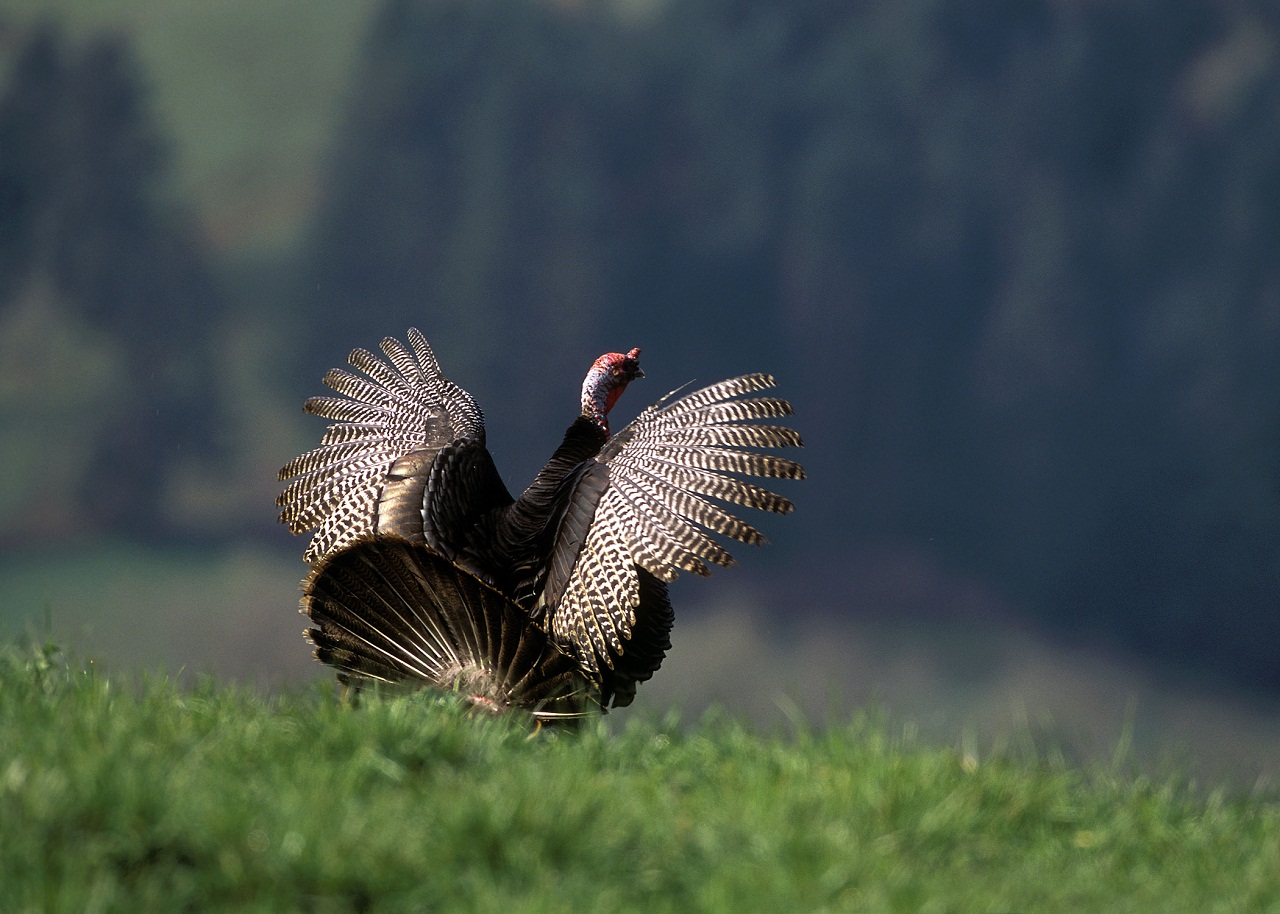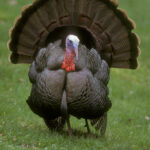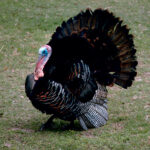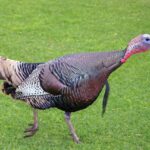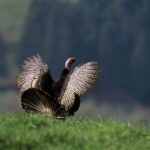Table of Contents
Wild Turkey
It was domesticated long before the Europeans first stepped on the American soil from the days of the Mayan empire. The Wild Turkey is part of the Galliformes family and it is scientifically named (Meleagris gallopavo) and they were domesticated first starting from the Mexico state. W can enumerate a few more species of Turkey that are part of the same family like the South Mexican Wild Turkey, Gould’s Wild Turkey, Rio Grande Wild Turkey, etc.
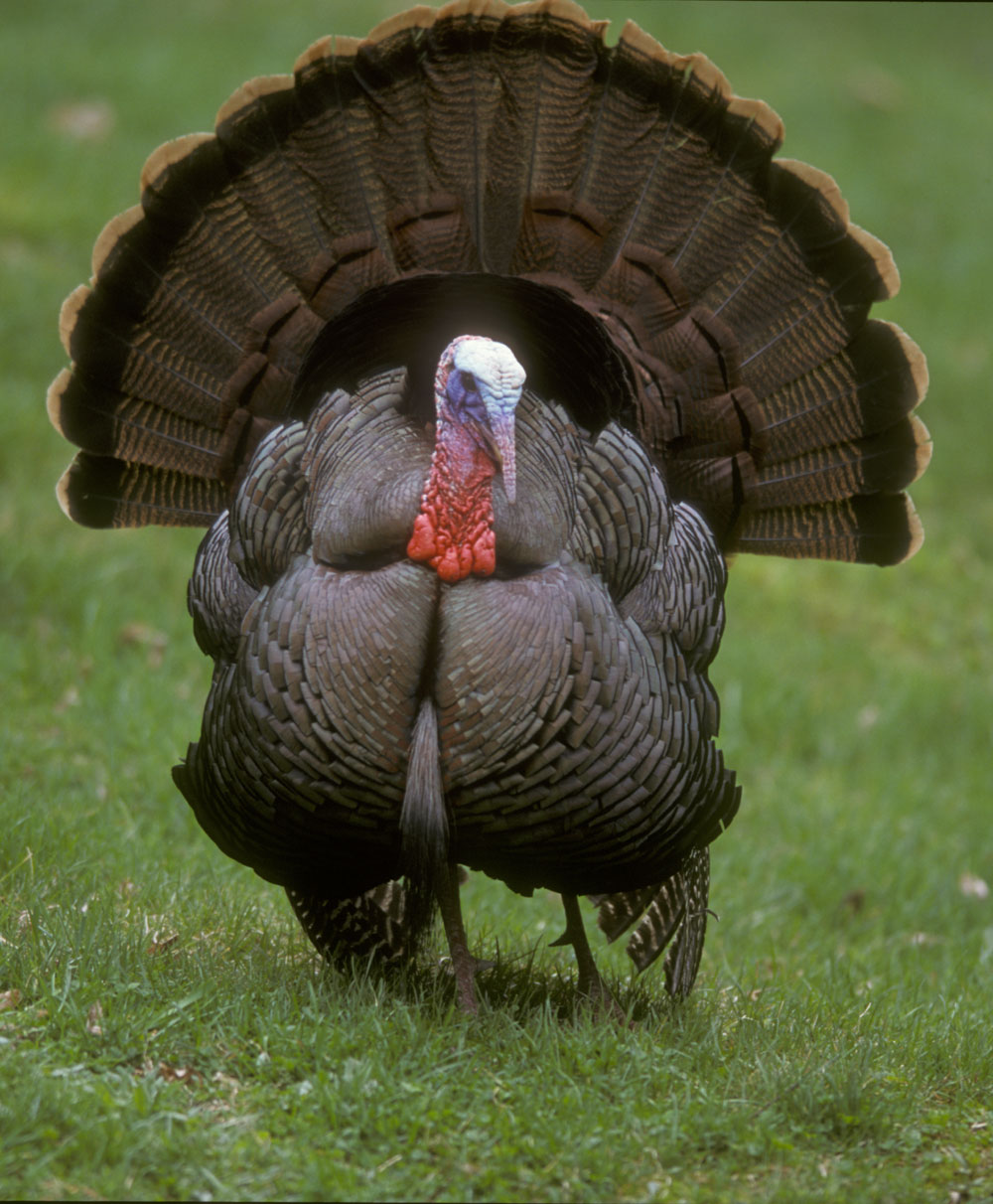
Description
Color The legs of the wild turkeys are either reddish-yellow or grayish-green, the ales have a red featherless neck and on their head you can notice fleshy growths The female is slightly smaller then the male and they have duller feathers then them in shades of brown and grey. When a male turkey is ready to fight, its head turns red and when, it is excited it turns blue.
The color of male wild turkeys can get duller but if this happens it is usually a sign of health weakness.
Weight adult males weigh 5 to 11 kg (11–24 pounds) while females weigh 2.5–5.4 kg (5.5–12 lb)
Length adult males measure 100–125 cm (39–49 in) while females measure 76 to 95 cm (30–37 in)
Wingspan 1.25 to 1.44 m (49–57 in)
Not like their domesticated relatives the Wild Turkey will run or fly at the first sign of threat. Even if the look to fat to be able to fly they actually aren’t nor fat nor unable to fly their look is quite deceiving since they are really the agile type. They leave in the open wood or savanna and when they do fly they do it close to the ground and for distances not greater then a quarter mile (400 m)
Feeding on seeds berries, various grains and a range of insects the wild turkeys are considered omnivores. Acorns and nuts are their favorite foods so they climb into trees to get them or fly up in them. But they eat just as well a great variety of grasses. This wide variety of food consumption allows them to breed in large numbers on a rather small region. They eat early n the morning or late in the afternoon.
The males mate with more then one partner so therefore are polygamous. When they are excited the most the males neck and head turns to solid white. They start their courting as soon as April March when the two of them both males and females are still in the wintering area.
Females lay 10 – 14 eggs around 1 per day and they are incubated for 28 days. Unfortunately these birds have quite many natural enemies like rats, snakes, foxes, etc.
